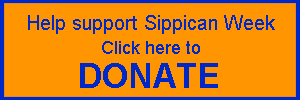Athletic policy tackles risk of concussion
Getting your bell rung. Seeing stars. Out to lunch.
The slang belies the seriousness of the traumatic brain injury known as a concussion. And, until fairly recently, so did the treatment.
A student athlete might have been been told to “walk it off” and get back on the field following a blow to the head.
That’s no longer the case.
With fall sports in full swing, including the hardest hitting of them all – football – area schools have in place comprehensive policies that ensure concussed students make a safe return to his or her sport.
“We are very cautious,” said Old Rochester Regional High School Athletic Director Bill Tilden. “Some say we might be too cautious, but it’s your kid’s brain we’re talking about. They only get one.”
So far this year, eight students at ORR were monitored for possible concussions with two being cleared to return.
According to the Massachusetts Department of Health, of the approximately 200,000 students involved in athletics at the middle and high school level, 18 percent annually report symptoms of a concussion after a blow.
In 2012, state legislation required schools to develop policies related to the treatment of concussions. Tilden said at ORR coaches, teachers and students are part of a process that not only helps diagnose and treat the injury, but also decides when a student returns to his or her regular athletic and academic schedule.
It starts in the beginning of the year when every student in the school is administered the ImPACT (Immediate Post-Concussion Assessment and Cognitive Testing).
The computer-based evaluation tests a student’s memory, speed and cognitive abilities to set a baseline. Those results are saved and compared to future scores should a student suffer a concussion.
Administered 24 to 48 hours after a suspected concussion, the test offers Tilden and his staff another tool to evaluate students.
“Just because you don’t have a headache doesn’t necessarily mean you don’t have a concussion,” Tilden said. “It depends on what part of the brain gets bruised.”
Making sure the brain is healed prevents the chance of a second concussion. The risk of greater injury is much higher if an athlete is hit before completely recovering from the previous blow. That can lead to long term damage, a lengthy recovery and possibly fatal brain swelling.
After a hit, a student must not experience symptoms for a week before a series of exercises starts. Mullen explained that an athlete will use a stationary bike for 10 or 15 minutes at first. If all goes well, the exercises are increased steadily in duration and intensity over the next five to seven days. During that time, scores from the ImPACT test are compared to the student’s baseline.
On Monday afternoon, John Mullen, ORR’s athletic trainer, was working with one student who had taken a hard hit. The school’s “return to play” policy spells out what steps must be taken before a student gets back on the field. While the student experienced no problem on the bike, Mullen said his test scores told a different story.
“Try jogging for 20 minutes tomorrow, but otherwise take it easy, nothing too strenuous,” Mullen told the athlete after informing him his new scores were significantly below his baseline.
Mullen, who has been the school’s athletic trainer since 1997, said the test is a good tool for keeping students safe.
Faculty and parents are also part of the healing process when it comes to academics.
ORR Nurse Kim Corazzini said that all students with suspected concussions are strongly encouraged to make an appointment with a primary care physician. Doctor recommendations can change school assignments in some cases.
“Depending on the severity of the injury, homework assignments might be modified and tests might be postponed,” Corazzini said. Those recommendations may also include limiting television, phone and computer use. “That’s to give the brain a rest,” she said. “It’s hard for some kids to imagine to do that, having been hooked on technology for so many years.”
Also, Corazzini is on the watch for students who are eager for their normal routine before fully healing. The ImPACT test results are helpful when it comes to telling students to rest, she said.
“It’s not like looking at an X-ray and being able to see a broken leg,” she said of brain injuries. “Think of the brain as a bowl of Jello. When it gets shook up the synapses need time to settle down and reconnect.”















